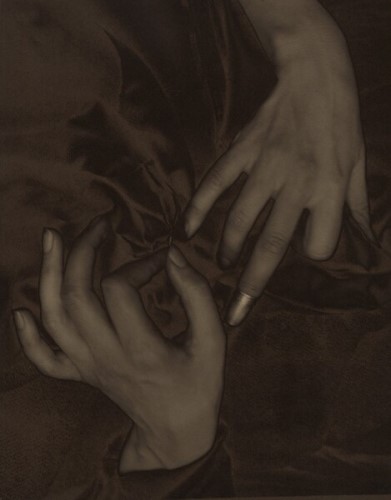Palladium Prints
Constance McCabe and Sarah Greenough

Alfred Stieglitz, The Barn, 1922, palladium print, National Gallery of Art, Washington, Alfred Stieglitz Collection, 1949.3.613
Key Set number 781
View all palladium prints in the Key Set
Palladium was another metal that photographic paper manufacturers utilized during World War I as a cheaper alternative for platinum. The palladium process is very similar to the platinum process, except that salts of palladium are substituted for salts of platinum to form the final image. In general, palladium prints are warmer and more sepia in hue, although a “black” palladium paper was available. Introduced in 1916, palladium paper was commercially manufactured until the mid-1930s.

Alfred Stieglitz, Georgia O’Keeffe—Hands and Thimble, 1919, palladium print, National Gallery of Art, Washington, Alfred Stieglitz Collection, 1980.70.138
Key Set number 566
Alfred Stieglitz used palladium paper from 1917 through the mid-1920s. Beginning in the early 1920s, he often solarized his palladium prints by manipulating the moisture content of the sensitized paper to achieve a reversal of tones.
Suggested Reading
Greenough, Sarah. “A Great Day for Palladio: Alfred Stieglitz’s Palladium Photographs.” In Platinum and Palladium Photographs: Technical History, Connoisseurship, and Preservation, edited by Constance McCabe, 348–355. Washington, DC: American Institute for Conservation of Historic and Artistic Works, 2017.